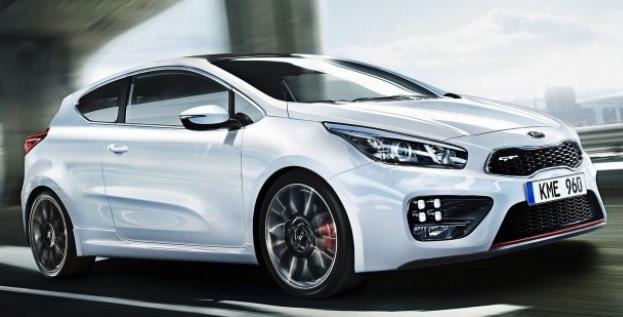
It was less than 20 years ago that Samsung was seen as a cheap electronic supplier with its fair share of quality issues, yet today it's a major player in electronics – everything from smartphones to televisions and whitegoods.
The world's biggest company, Apple, certainly views Samsung as a threat, while the determination of Korean brands to be the best has seen well-known Japanese electronic manufacturers such as Sony and Panasonic overtaken.
This brings us, of course, to obvious parallels in the automotive industry with the likes of Hyundai and Kia.
Korean car manufacturers have been gradually improving over recent decades, though it wasn't until the past five or so years that Kia and Hyundai have started to transcend their perceptions as budget brands.
It's perhaps no coincidence that Kia and Hyundai are sister brands, with the latter becoming a major shareholder of the former in 1998.
They share everything from engines to platforms and a great deal of research and development, though there's an emphasis on independence when it comes to design and marketing strategies.?Like Hyundai, Kia is taking big strides both globally and locally.
Last year was the best year on record for Kia Australia with 30,758 sales, which represented a 22 per cent increase on 2011. This trend is also not unique to Australia, with the brand growing in Europe (despite the poor economic conditions) and gaining a strong foothold in North America.
So why has the world turned its attention towards Kia? What has the company done in the past few years that has seen its fortunes turn from an automotive manufacturer in dire financial strife, to one on an almost relentless growth rate?
Kia Australia's national public relations manager, Kevin Hepworth, says the difference between the old and new Kia is enormous.
"You are essentially talking two different eras," he says. "The modern Kia is a tightly run, well managed business which is committed to best practice automotive marketing. The turnaround is an amalgam of leading design, quality control, industry-best engineering and focused marketing."
'Leading design' is certainly an area that can't be underestimated when it comes to Kia's transformation, which has been very much a visual one too in the form of current vehicles penned by former Audi designer Peter Schreyer.
Kia admits the appointment of Schreyer in 2006 has "certainly paid dividends", but is the company's sales success entirely dependent on its looks?
"It is not a dynamic that can be precisely quantified," says Hepworth, "but style and design are consistently towards the top of purchase drivers, along with safety, economy, value and environmental considerations".
And Kia stresses value remains a focal point even though Kia vehicles are no longer necessarily the default choice of buyers motivated by price alone owing to the ascension of Chinese and Malaysian car makers as the new price leaders.
"The very notion of value is a relative one in which the only relationship to price is what you get for your money," says Hepworth. "You can find value in an everyday grocery item or in a multi-million-dollar property. Value for money has been a foundation of Kia's growth and there is no reason to change that."
Making a Kia truly desirable remains a challenge even if there has been a perception shift, but the company is determined to overcome the nation's passion for certain brands.
"The current – and future – range of Kia cars pose the question to buyers: 'Are you smart enough to look beyond badge snobbery?' If you are the rewards are there," says Hepworth.
Kia already has a fairly sizeable range, including the likes of the Rio city car, funky Soul, Optima medium car, Sportage and Sorento SUVs, Rondo and Grand Carnival people-movers, and the Cerato small-car range that will be refreshed in 2013.
Kia and Hyundai both have room to move in terms of engineering refinement, but many of the current models from these brands are better to drive than ever.
Only a decade ago Japanese manufactures would have ridiculed the notion of using a Korean car for competitor testing, choosing instead to focus only on their compatriots' cars and European models as benchmarks for developing new vehicles.
Today, Kia and Hyundai models are considered genuine competitors.
Western car manufacturers were caught out by Japanese rivals in the 1970s and 1980s, when the orient brought to market cars that were popular with young buyers and gained a strong following due to their reliability and efficiency.
With that logic in mind, the real threat to the continuing rise of Korean manufacturers is perhaps not a resurgence from the Japanese but an attack from the Chinese manufacturers, which are heading to Australia in droves.
"Anyone who dismisses the Chinese car makers does so at their own peril," says Hepworth. "Chinese manufacturing has shown in other industries – electronics, mobile phones, homewares – that they are fast learners with a fierce determination to succeed."





